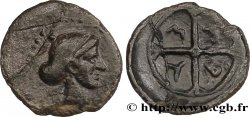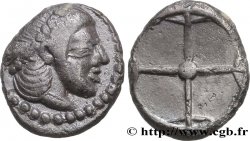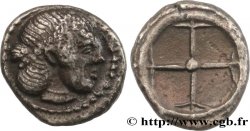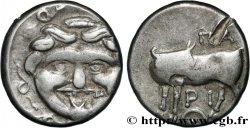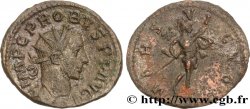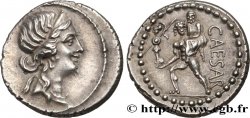v23_0029 - SICILY - SYRACUSE Tétradrachme
MONNAIES 23 (2004)
Starting price : 1 600.00 €
Estimate : 3 200.00 €
unsold lot
Starting price : 1 600.00 €
Estimate : 3 200.00 €
unsold lot
Type : Tétradrachme
Date: c. 470-466 AC.
Mint name / Town : Syracusa
Metal : silver
Diameter : 27,5 mm
Orientation dies : 3 h.
Weight : 16,93 g.
Rarity : R2
Emission: groupe 4, série 13b
Coments on the condition:
Flan très large et complet des deux côtés. Au revers, le portrait est parfaitement centré. Le visage occupe la plus grande partie du flan. Les quatre dauphins, imposants et complets, tournoient agréablement autour de la nymphe. Jolie patine de collection ancienne. Au droit entre 10 heures et 1 heure, le flan est légèrement irrégulier
Catalogue references :
Predigree :
Cet exemplaire provient de la collection Chabenat, Bourgey, 10-12 décembre 1912, n° 54 et de la vente Bourgey des 14-16 mai 1914, n° 37 (= Boehringer 440/10) et vendu par Feuardent (1360 francs +20% frais, avec son étiquette)
Obverse
Obverse legend : ANÉPIGRAPHE.
Obverse description : Bige au pas à droite, conduit par un aurige tenant les rênes et le kentron ; l’aurige est couronné par Niké volant à gauche qui pose la couronne sur l’aurige ; monstre marin à l’exergue.
Reverse
Reverse legend : N RÉTROGRADE.
Reverse description : Tête d'Aréthuse à droite, les cheveux relevés et retenus par un diadème de perles, entourée de quatre dauphins.
Reverse legend : SURA-KO-SI-ON
Commentary
Mêmes coins que l’exemplaire du trésor de Randazzo (n° 529). Sur ce type, au droit, la Niké ne couronne pas le bige, mais l’aurige.
Same dies as the copy from the Randazzo treasure (no. 529). On this type, on the obverse, the Nike does not crown the charioteer, but the charioteer
Same dies as the copy from the Randazzo treasure (no. 529). On this type, on the obverse, the Nike does not crown the charioteer, but the charioteer








 Report a mistake
Report a mistake Print the page
Print the page Share my selection
Share my selection Ask a question
Ask a question Consign / sell
Consign / sell
 Full data
Full data